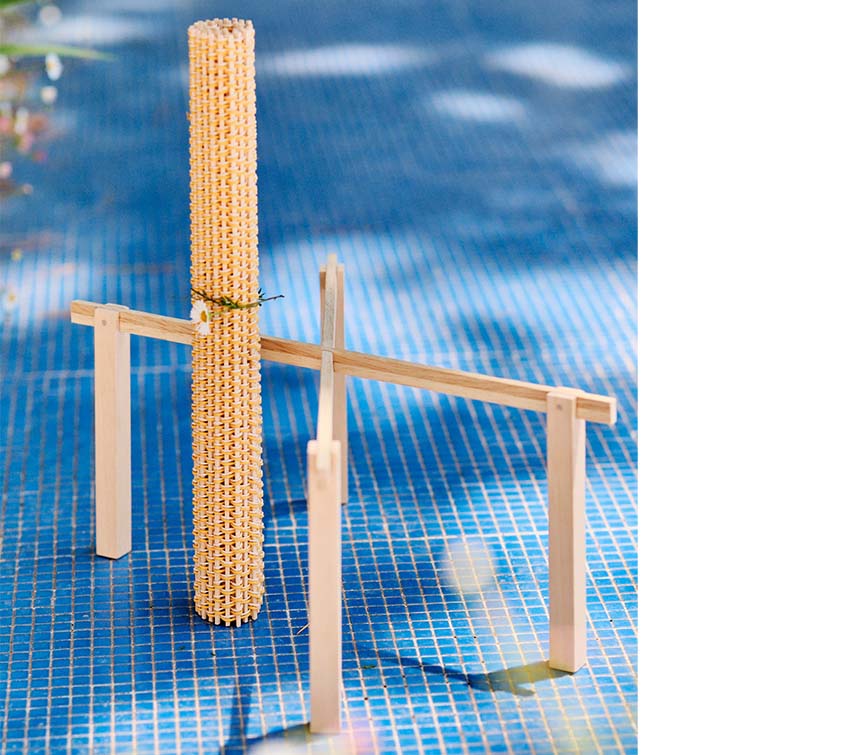
Text by Giovanni d’Odorico Borsoni Photos by Luc Bertrand
Tectona talent
The second edition of Prix Tectona Design Parade, which rewards a member of the new generation of contemporary designers, was held in June at Villa Noailles, the modernist masterpiece constructed by Robert Mallet-Stevens on the hills of Hyères.

Always supporting modernity
Gabriel Guevrekian was only 26 years old when the architect Robert Mallet-Stevens entrusted him with the design of the modernist garden of the new residence he’d just built for Charles and Marie-Laure de Noailles in Provence. With a dash of audacity and a certain lack of scruples, Guevrekian transformed the completely sterile terrain into a veritable Cubist painting, one of the earliest striking examples in the history of modern gardens. In keeping with Charles de Noailles’s well-known support of modern artists and as a tribute to his passion for gardens, Tectona returned to the Design Parade festival with a special prize aiming to reward promising young talents in Contemporary Design and to promote research in outdoor furniture.
As Blanche Aloisi-de Crépy, Managing Director of Tectona, puts it: “We all like living outdoors, and I’m always surprised to see that the overwhelming majority of images posted on social media — which are supposed to depict the happiest moments of our lives — were taken outdoors… This is why it’s essential to create furniture and other outdoor items that are time-less, resistant and able to be passed down the generations”.

A table made for nature
For the second edition of Prix Tectona Design Parade, ten designers were invited to design an outdoor table, and the only brief was to use metal or other material that is rot-proof and resistant in the long term. Taken together, their creations resembled a handbook for outdoor living.
The jury, presided over by designer Fabien Cappello and guided by Jean-Yves Grandfils, a recipient of the prestigious Meilleur Ouvrier de France award and director of the Tectona Workshop, selected the proposal submitted by Gabriel Hafner, prizewinner (class of 1995) of Lausanne design school ÉCAL, who found inspiration in the very essence of a picnic… His table, extremely practical, has two parts: a foldable wooden base and a textile/wood fibre braided mat.
Gabriel Hafner explains: “My starting point was a picnic blanket mixed with a beach mat, which I lifted to a suitable height, finally placing it on two trestles, which I transfor-med into a foldable base… The thing I liked about it is that you can open it up, or close it, in a single movement”.
“The ability to rapidly transform a space, thanks to garden furniture, was very appealing to us,” adds Blanche Aloisi-de Crépy. “This ‘fluid’, light, adaptable piece is an ode to fineness”.
